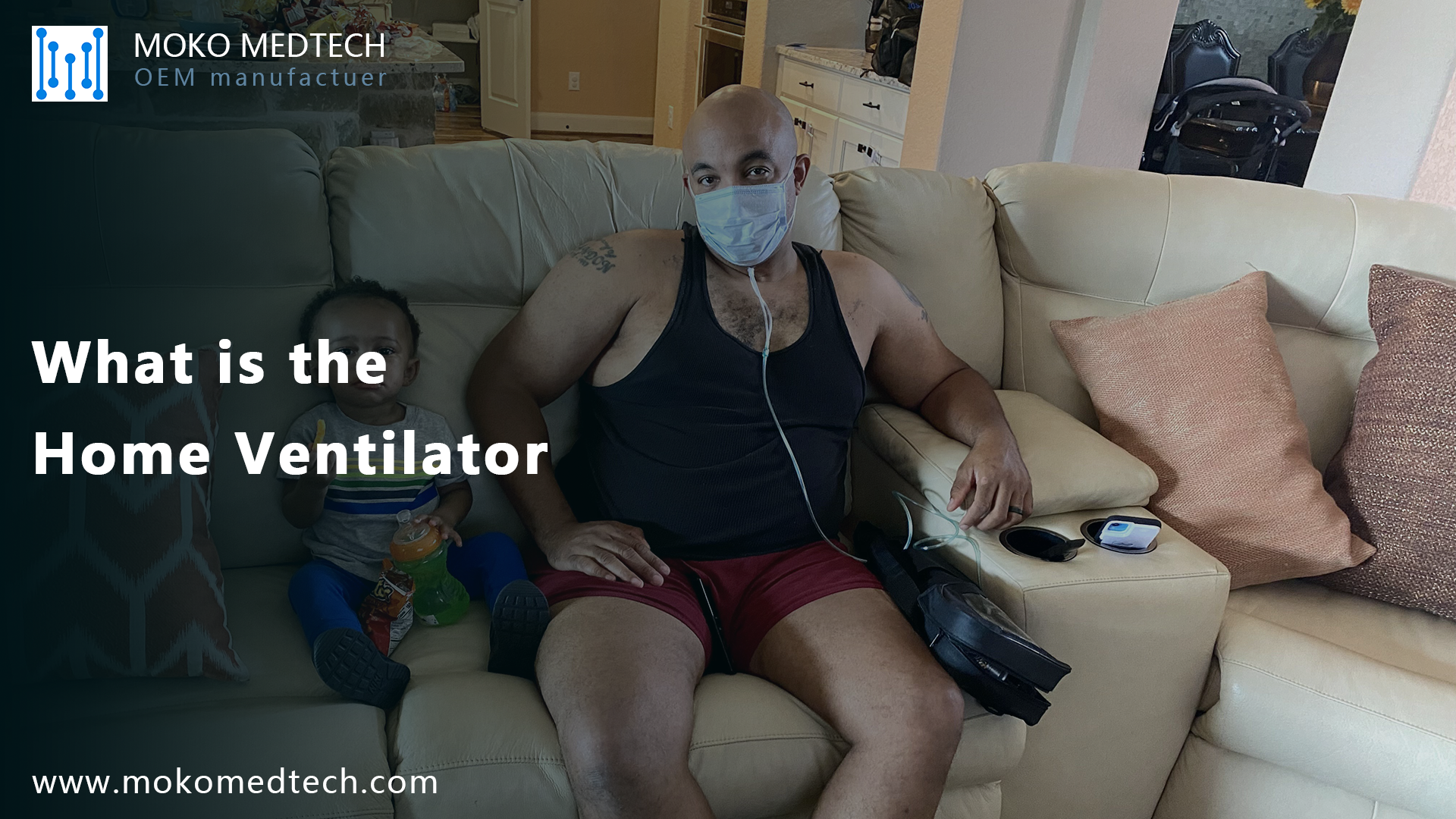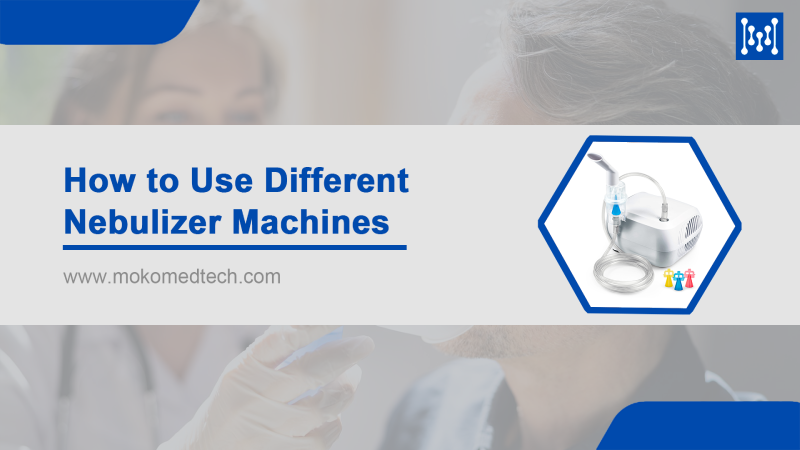Today, we, a medical device OEM, are going to introduce home ventilator, which is a hot product on manufacturers’ orders.
Introduction

Generally speaking, home ventilation includes ventilation control system, monitoring system and display interface. Meanwhile, the device is usually equipped with medical gas low-pressure hose assemblies, alarm systems, breathing circuits, humidifiers and other accessories or auxiliary function modules. By controlling the turbine speed, the airway pressure reaches the preset pressure, so single-level or bi-level continuous positive pressure ventilation support is realized.
Professionally, household ventilators have precise components, stable and reliable air flow, air pressure measurement circuits, silent fans, user-friendly ventilation strategies and analog circuit solenoid valve control circuits, as well as various alarm measures and simple human-machine interfaces. Therefore, the ventilator promises strong safety, economy, comfort, and easy control.
With the above features, it is ideal for providing ventilator dependent patients or increasing lung ventilation at home. Since the device has been implanted with an intelligent monitoring system which is similar to nursing monitor in the hospital, the care of ordinary people acquired basic guidance is sufficient to ensure the safety and effectiveness of the therapy.
What is the purpose of a home ventilator?

Simply speaking, a ventilator is like an air compressor. It is applied to assist and even take place of human breathing. During normal respiration, the machine generates an active negative pressure discrepancy between the airway opening and the alveoli through the respiration to breath in. After breathing in the air, the elastic recoil of the thorax and lungs creates a passive positive pressure discrepancy between the airway opening and the alveoli, and then finishes exhalation. This exactly meets the needs of physiological ventilation.
When it comes to home ventilator, we may think of another home medical device, the oxygen generator. The oxygen concentrator is just like a filter, filtering out the oxygen in the air. It is equipped with molecular sieve physical adsorption and desorption technology. In other words, the molecular sieve full of the oxygen generator is capable of absorbing nitrogen in the air during pressurization, while the remaining oxygen collection. After refinement, it becomes high-purity oxygen. However, it should be noted that it doesn’t suit critically ill patients.
What are the benefits of a ventilator?

In common, patients with OSAHS (obstructive sleep apnea-hypopnea syndrome) require home ventilators. It can avoid moderate to severe hypoxia at night, and the performance of carbon dioxide retention. At the same time, it can improve the quality of nighttime sleep, and ensure normal sleep structure as well as normal metabolism.
Moreover, this medical device is also suitable for patients with COPD (chronic obstructive pulmonary disease). In this case, it is necessary to use a home non-invasive ventilator to improve nighttime hypoxia and ensure ventilation. Meanwhile, it has a protective effect on other organs, which contributes to the treatment effect of other diseases, such as high blood pressure.
Besides, for patients with CRF (chronic respiratory failure), ventilator will be of great help. It can not only reduce the risk of severe hypoxia and carbon dioxide retention, but also alleviate pulmonary heart disease and pulmonary hypertension which is caused by obstructive lung. All in all, it can greatly improve the quality of life of patients.
Last but not least, home ventilator saves the time for transportation and waiting in line in the hospital so that patients can enjoy their therapy at a low cost and in a happy mood.
How to Choose A Ventilator for Home

A good home ventilator must have the characteristics of good stability and precision, additional functions, easy operation, low noise and maintenance cost. Only In this way, can it provide users with safe, comfortable and efficient respiratory therapy.
Stability and precision
Higher stability and precision promises the stability of the output airflow quality and duration, and avoids bad effects on users caused by pressure fluctuations.
Additional IoT functions
A good home ventilator should also be equipped with some practical additional functions, such as intelligent monitoring, automatic adjustment, and bluetooth pairing. These features adapt to the individual needs of the user, which enhances treatment effectiveness and comfort.
Ease of operation
The operation interface and function settings of the home ventilator should be simple and clear enough, so that users and family members can easily grasp the usage method and adjust the parameters.
Low noise and maintenance cost
Noise and maintenance costs of home ventilators are also an important consideration. A home ventilator should be quiet, easy to clean and maintain with affordable parts.
Small size and Portable
In order to increase its home adaptablity, the exterior of home ventilator must be small and moveable. As we all know, the leisure space for medical devices at home is far smaller than that of a hospital. Also, people move around more flexibly at home than in a hospital. Therefore, as one of the household appliances, small size and portable design are very necessary.
Top 10 Ventilators for Home

Based on careful consideration and rich experiences in the field of medical device manufacturing, we select 10 machines for your reference as follows. Let’s look into their key parameters and information.
MOKO MEDTECH
| Name | MK1 | Sound Level | 28dBA |
| Modes of Ventilation | 4Types | Dimensions | 230*150*124mm |
| Pressure Range | 4 to 25 cmH2O | Weight | 1.5 g |
| Adjustable gradient | 0.5 cmH2O | Record Storage | Bluetooth to phone |
Yuwell
| Name | YH-725 | Sound Level | N/A |
| Modes of Ventilation | 5 Types | Dimensions | 270*138*100mm |
| Pressure Range | 4 to 25 cmH2O | Weight | 1.78 g |
| Adjustable gradient | 0.5 cmH2O | Max. Pressure | 25 cmH2O |
OMRON
| Name | HPS-A500 | Sound Level | N/A |
| Modes of Ventilation | 2 Types | Dimensions | 236*158*125mm |
| Pressure Range | 4 to 20 cmH2O | Weight | 1.6 g |
| Adjustable gradient | 0.5 cmH2O | Max. Pressure | 30 cmH2O |
Hypnus
| Name | U-25T | Sound Level | 28dB |
| Modes of Ventilation | 4 Types | Dimensions | 290*178*103mm |
| Pressure | 4-25cmH2O | Weight | 2.5 g |
| Adjustable gradient | 0.5 cmH2O | Record Storage | Cloud, SD Card |
AEONMED
| Name | BF20A | Sound Level | 28dBA |
| Modes of Ventilation | 3Types | Dimensions | 370*270*170mm |
| Respiratory Rate | Automatically | Weight | 1.26kg |
| Pressure Range | 4 to 20cmH2O | Record Storage | 365days |
Asycomfy
| Name | ST728 | Sound Level | 28dBA |
| Modes of Ventilation | 5Types | Dimensions | 159*157*135mm |
| Respiratory Rate | Automatically | Weight | 1.6kg |
| Pressure | 30 | Record Storage | SD Card |
Resmed
| Name | Astral 100 | Sound Level | 43dBA |
| Modes of Ventilation | 6 Types | Dimensions | 285*215*93mm |
| Respiratory Rate | Off, 2-50bpm | Weight | 3.2kg |
| Battery/backup time | Lithium-ion. (8h) | Delivered Volume | 100 to2500mL |
Philips
| Name | Trilogy Evo | Sound Level | N/A |
| Modes of Ventilation | 3 Types | Dimensions | 165*286*245mm |
| Respiratory Rate | Off, 0-80bpm | Weight | 5.2lg |
| Battery/backup time | Lithium-ion. (15h) | Delivered Volume | 0 to 2000mL |
Osiris
| Name | Osiris2 | Sound Level | N/A |
| Modes of Ventilation | 3 Types | Dimensions | 210*250*170mm |
| Respiratory Rate | 6-40bpm | Weight | 5kg |
| Battery Backup Time | 10h | Pressure Range | 5-40cmH2O |
Airliquide
| Name | Monnal T60 | Sound Level | N/A |
| Modes of Ventilation | 4 Types | Dimensions | 290*250*110mm |
| Respiratory Rate | Off, 0.5-10 l/min | Weight | 4kg |
| Battery backup time | Lithium-ion 5h | Pressure range | 0 to 20 cmH2O |
Conclusion
If you have interested in customized home ventilators, don’t hesitate to contact us, MOKO MEDTECH with ISO 13485.












